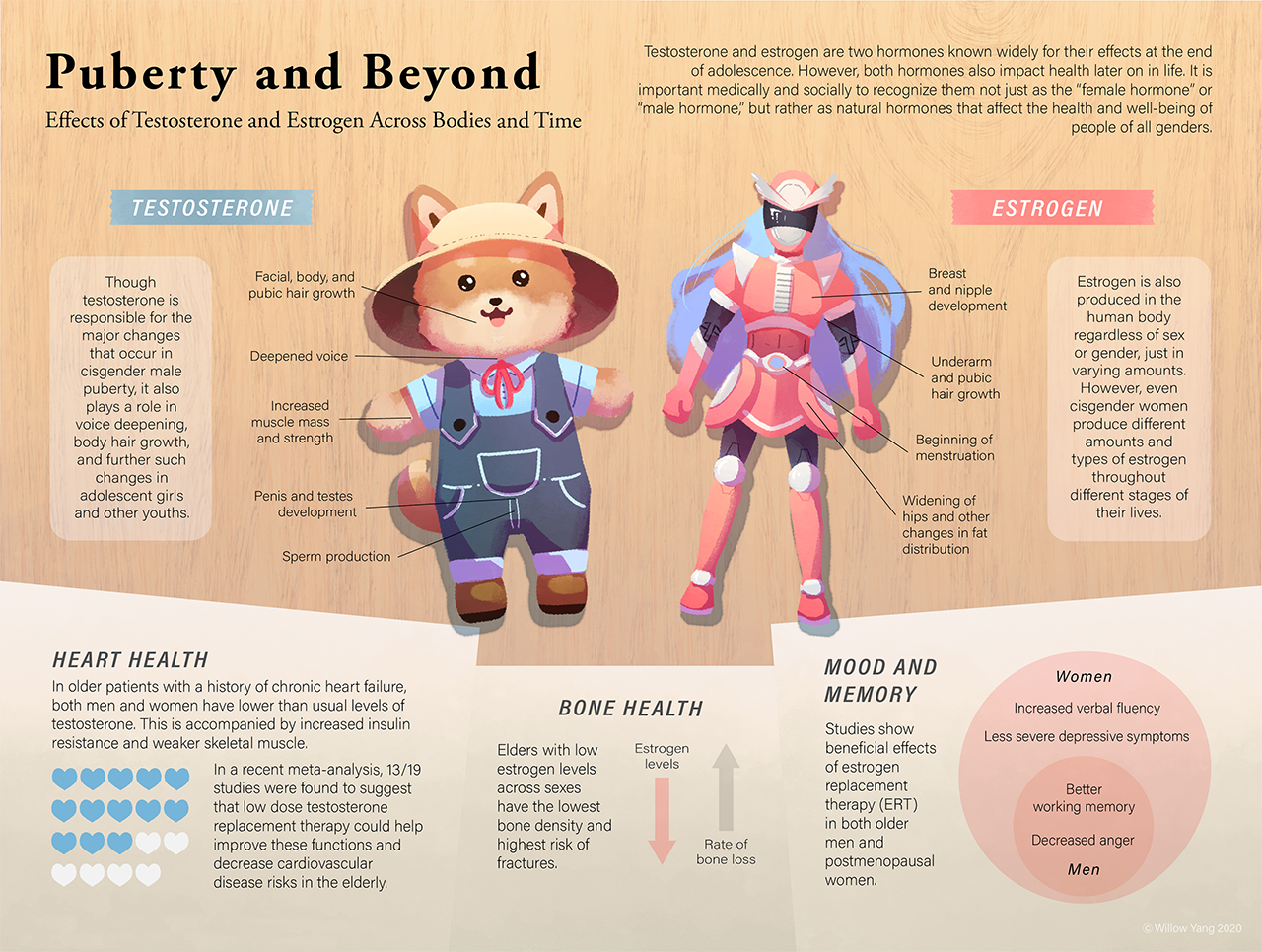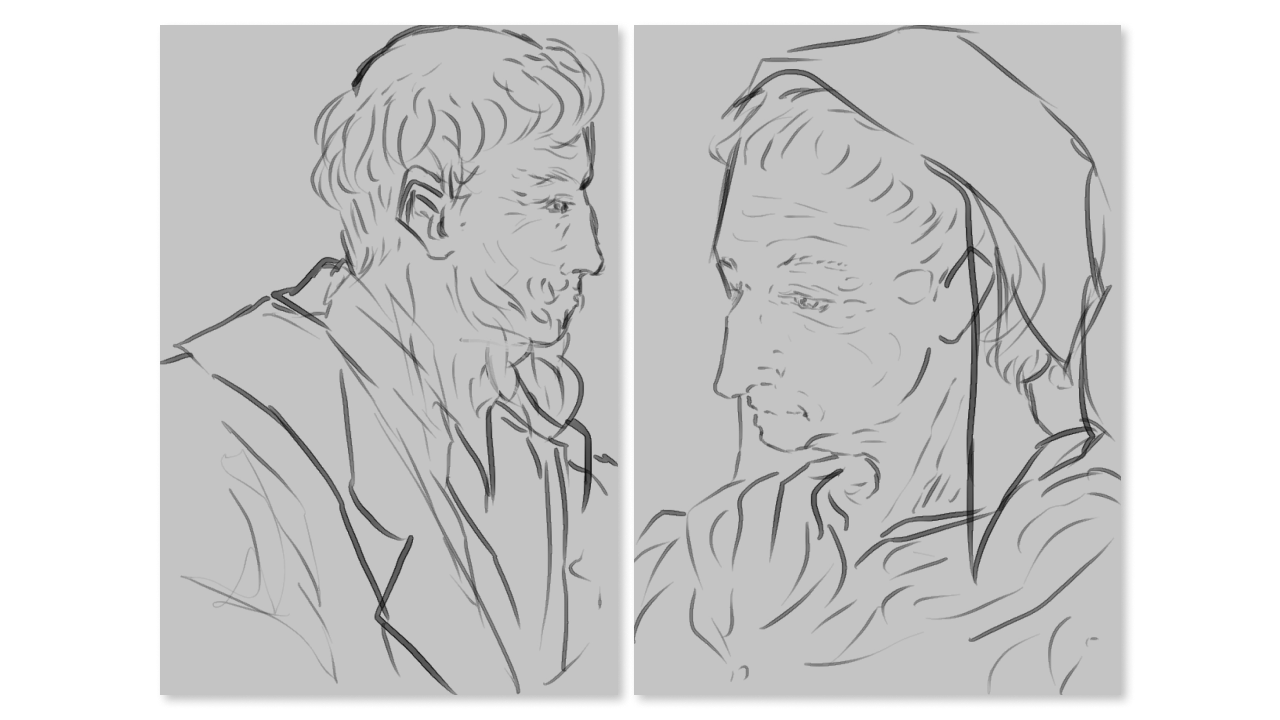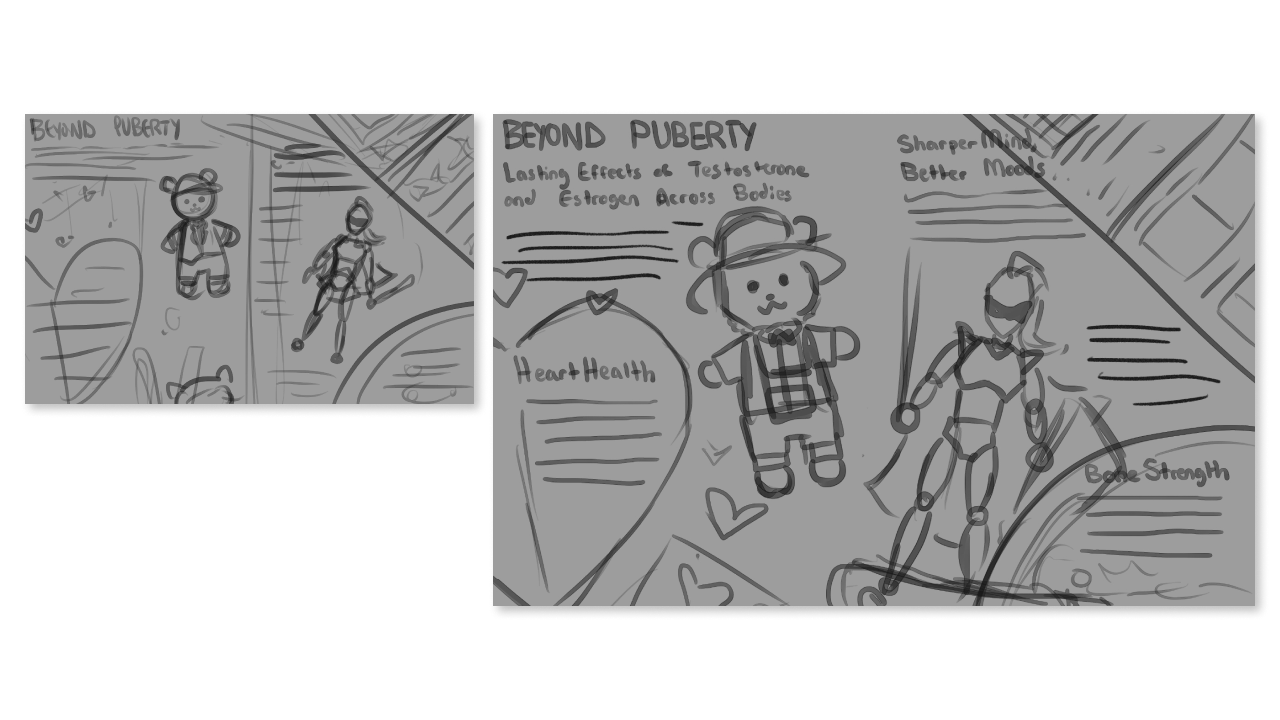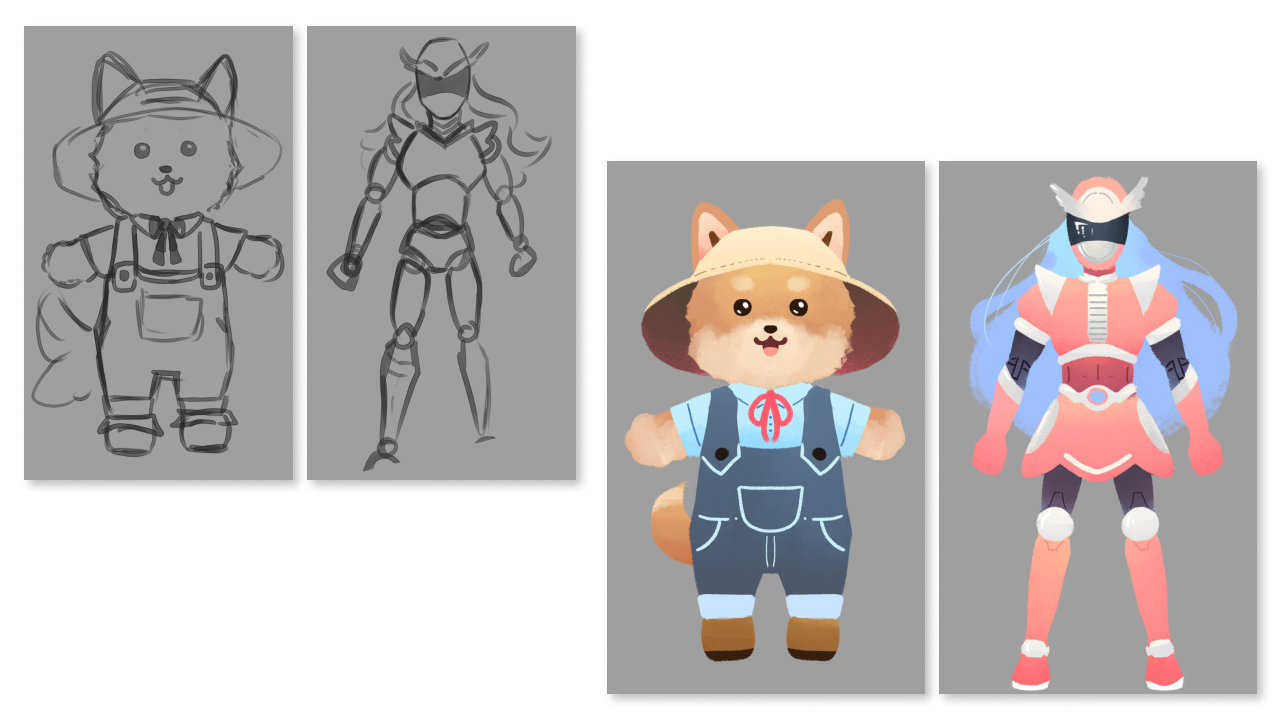Editorial Infographic
Puberty and Beyond

Project Type
Academic
MSC2023, MScBMC
University of Toronto
Supervisor
Dr. Jodie Jenkinson, PhD
MScBMC, University of Toronto
Duration
May 2020
Tools
Adobe Illustrator
Clip Studio Paint
Procreate
Introduction
Challenges in communication include not only teaching new concepts, but also changing pre-existing conceptions. Created as part of the MScBMC Information Visualization course, this piece aims to clear up the misconception of testosterone and estrogen as strictly "male" and "female" hormones.
Process
Concept
The first concept was fairly different from the final piece. Wanting the final piece to be eye catching with an editorial flair, yet still perceived as a "serious" piece of medical information, I initially turned to more a more realistic, classical aesthetic.

Draft
Thumbnail and Draft
The classical approach was scrapped for a more modern, cuter design, with non-human characters with the aim of making the spread more welcoming. The editorial feeling was kept with this new aesthetic.

Character Design
In keeping with the theme of "effects across gender and time", no specific age or human body
was portrayed.
To aid in instinctive reading based on societal associations, blue and pink were used
across the piece and within the characters to depict the effects of testosterone and
estrogen respectively. However, I flipped the usual gender-associated toys in their
depictions, so as to convey the spectrum of genders affected by the hormones covered.

Final

References
- Elagizi, A., Köhler, T. S., & Lavie, C. J. (2018). Testosterone and Cardiovascular Health. Mayo Clinic Proceedings, 93(1), 83–100. doi: 10.1016/j.mayocp.2017.11.006
- Endocrine Society. (n.d.). Estrogen. Retrieved February 13, 2020, from https://www.hormone.org/your-health-and-hormones/glands-and-hormones-a-toz/hormones/estrogen
- Harvard Health Publishing. (n.d.). Testosterone - What It Does And Doesn't Do. Retrieved February 13, 2020, from https://www.health.harvard.edu/drugs-andmedications/testosterone--what-it-does-and-doesnt-do
- Khosla, S., Melton, L. J., & Riggs, B. L. (2011). The unitary model for estrogen deficiency and the pathogenesis of osteoporosis: Is a revision needed? Journal of Bone and Mineral Research, 26(3), 441–451. doi: 10.1002/jbmr.262
- Miller, K. J., Conney, J. C., Rasgon, N. L., Fairbanks, L. A., & Small, G. W. (2002). Mood Symptoms and Cognitive Performance in Women Estrogen Users and Nonusers and Men. Journal of the American Geriatrics Society, 50(11), 1826–1830. doi: 10.1046/j.1532-5415.2002.50511.x
- Napoli, N., Faccio, R., Shrestha, V., Bucchieri, S., Rini, G. B., & Armamento-Villareal, R. (2007). Estrogen Metabolism Modulates Bone Density in Men. Calcified Tissue International, 80(4), 227–232. doi: 10.1007/s00223-007-9014-4
